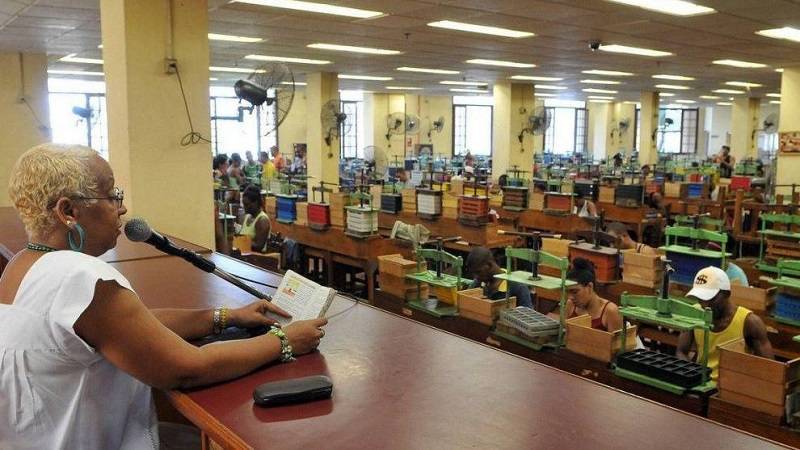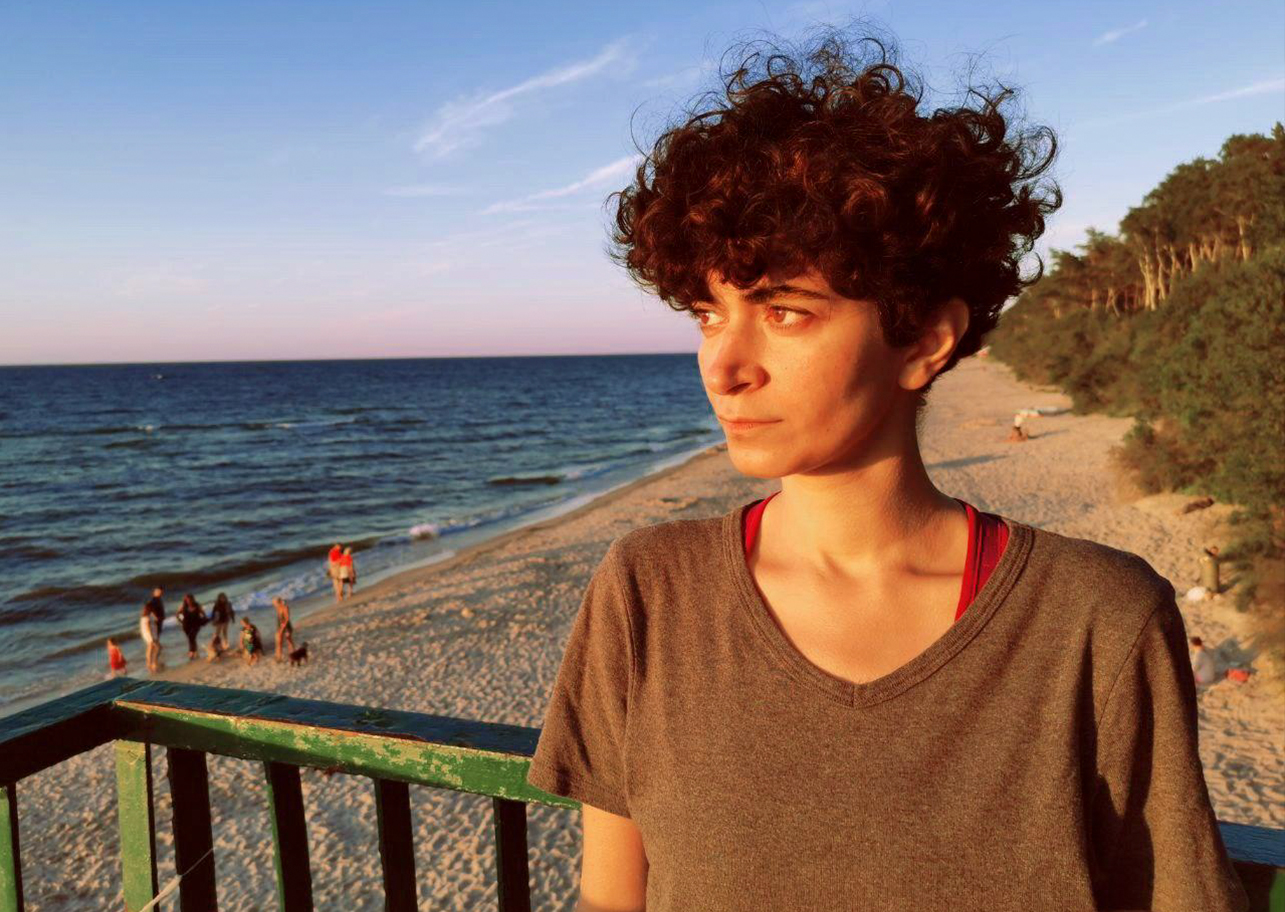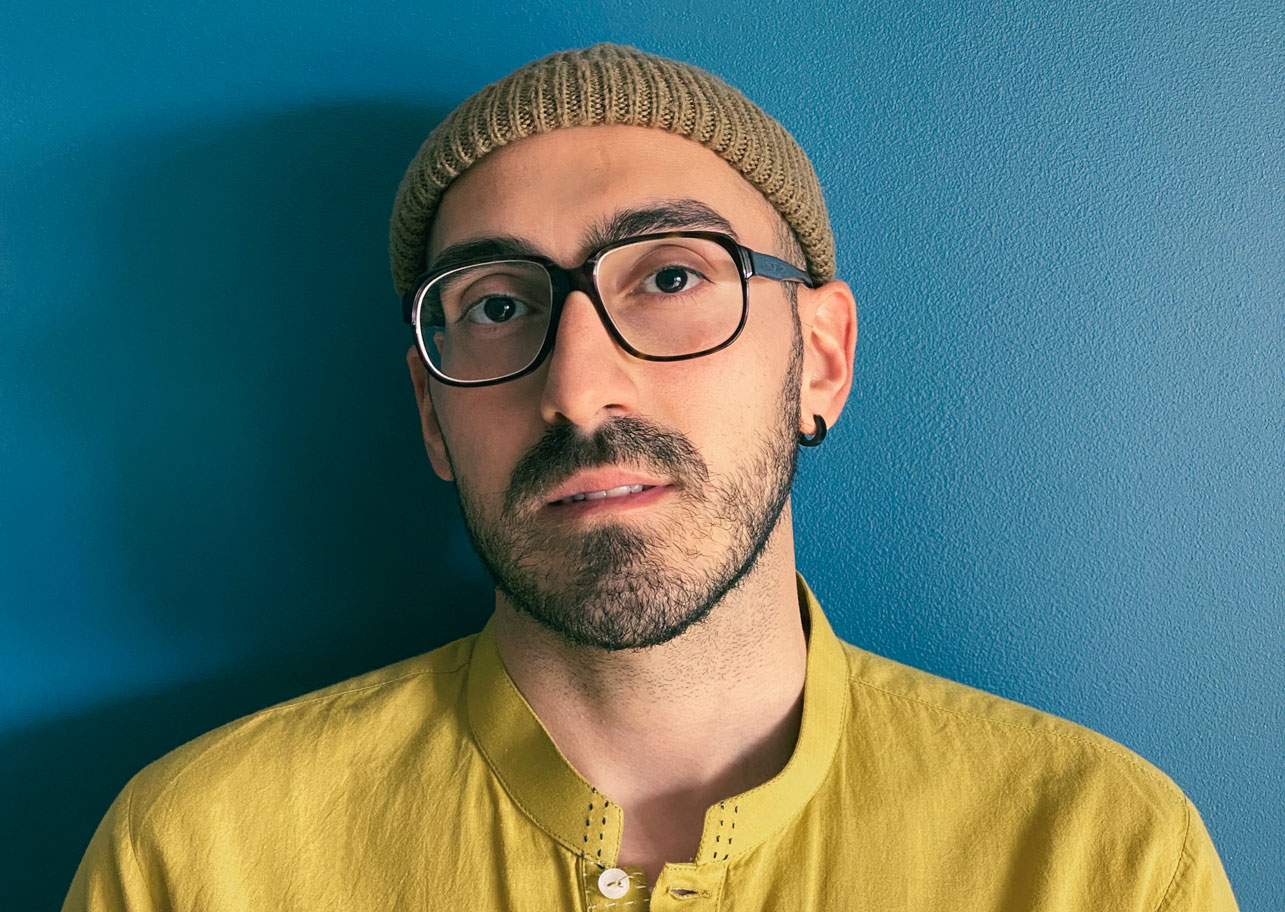Cuban Cigar Rollers
In Cuba, Cigar Rollers voluntarily initiated a tradition which continues into the present. In 1865, Saturnino Martinez was one of the first readers in Cuba. He read newspapers and stories to workers to keep their minds engaged while their hands were busy with the repetitive act of rolling tobacco papers. Lectors slowly became an important part of the factories. Workers refused to work in factories without readers. It was the workers who paid them by fundraising from a part of their income and deciding collectively what to hear. From the daily news to The Count of Monte Cristo and Les Misérables, workers transformed the repetitive task of cigar rolling into an intellectual act: listening, debating and reacting to what was being read collectively.
Stitching the resistance
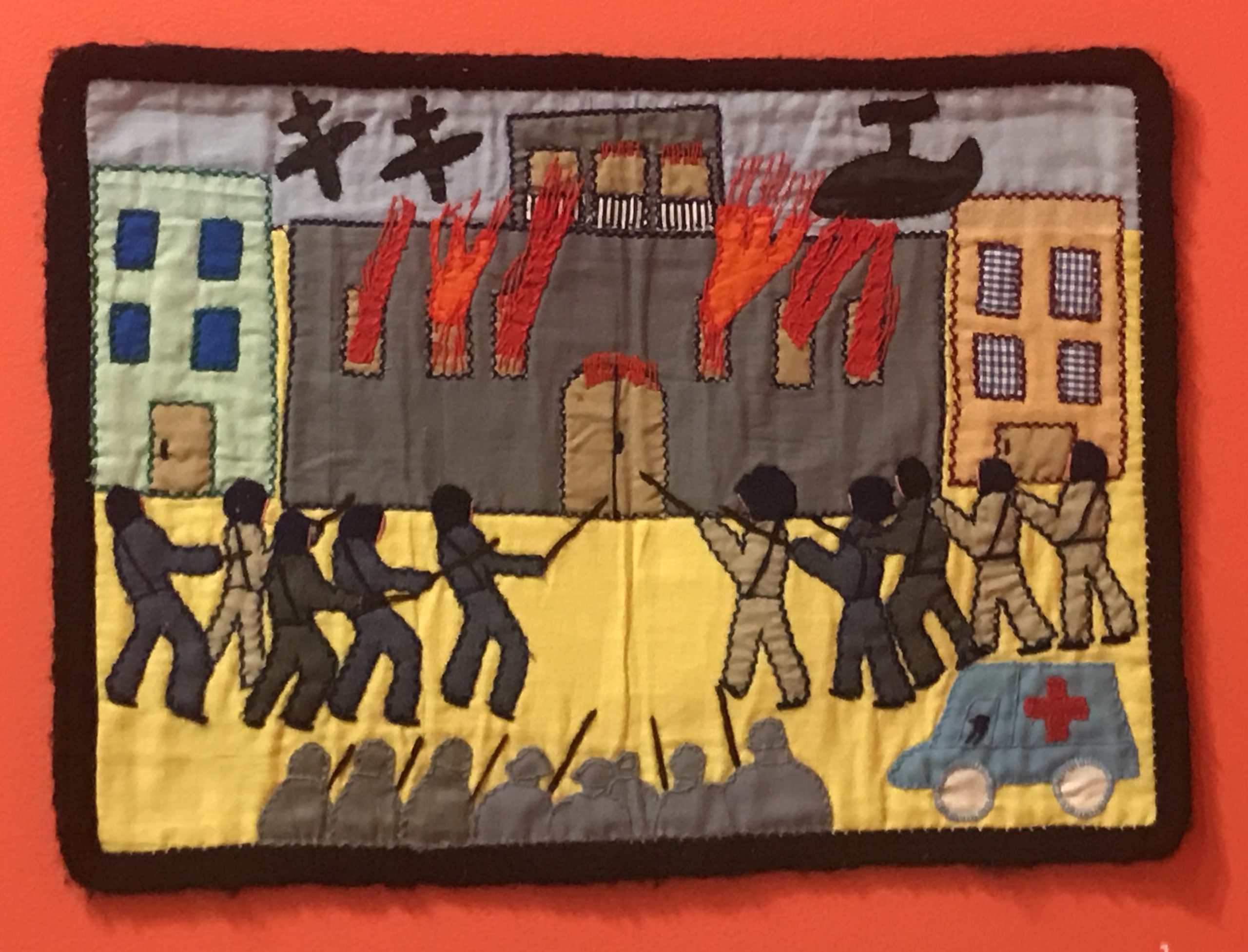
Throughout history all around the globe, swing has been an act of resistance among women. From Chilean Arpilleras to Iranian Chehel Tikeh, women have transformed the repetitive act of stitching to a political act. Women have fought patriarchy by gathering together, making, talking, debating and helping each other. Sewing not only ensured women’s economic independence from men, but also it made strong, cheerful communities to fight inequalities and protect the families.
Kesh-Makesh project
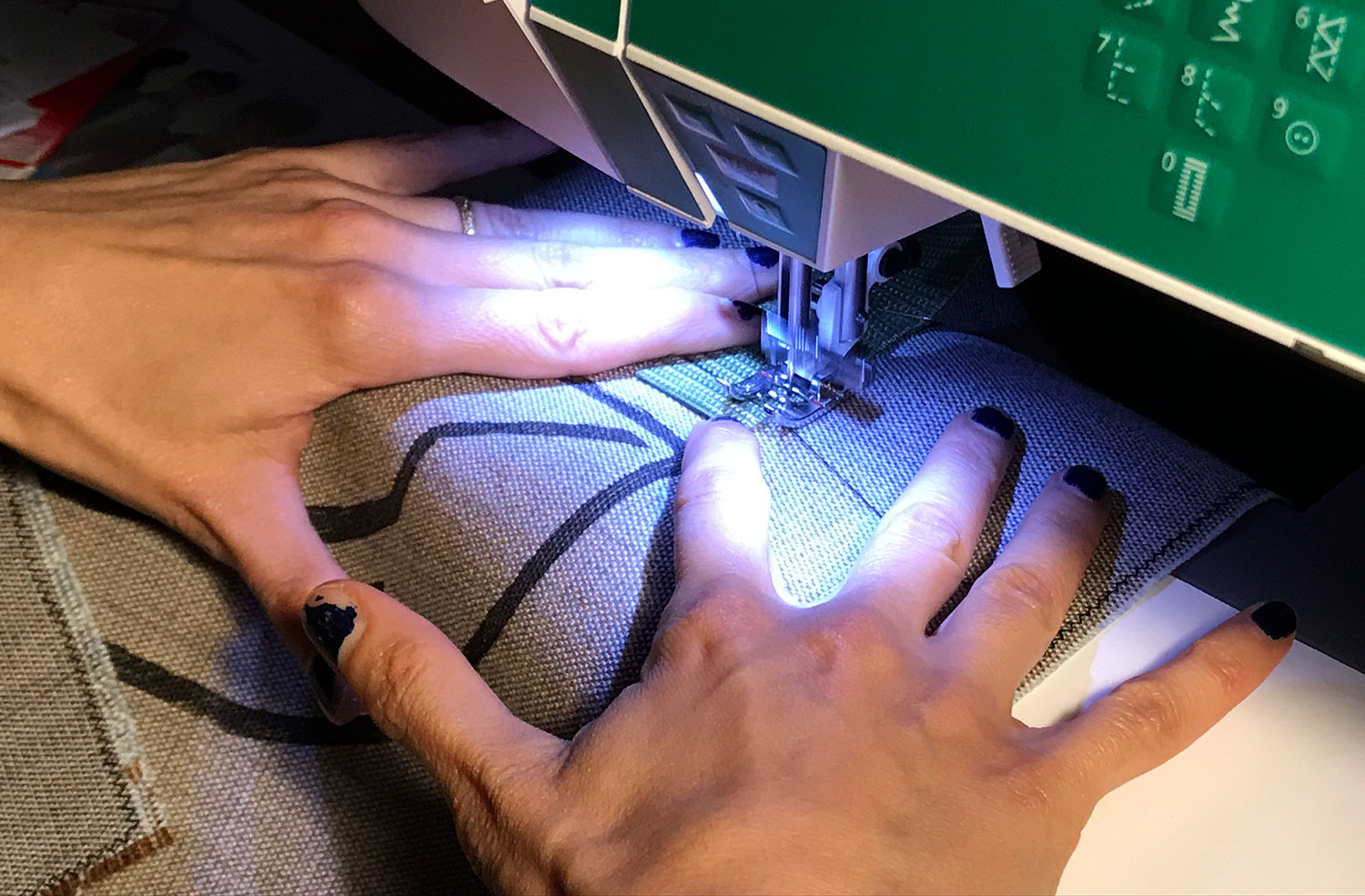
We, Maede Jenab and Sina Fakour, have initiated Kesh-Makesh project in 2019. It is the result of our long talks about social, political and philosophical subjects. For a long time, we were discussing Ideas to launch a project that can have financial income for us. We shared the same values of not willing to Provoke consumerism and making unnecessary objects to sell. Soon we understood that our talks are more interesting than the object to be fabricated. Our debates during the process of making were as important as the final object. This evoked the question of “labor” and “What work is?”. How can our intellectual reflections become a part of our labor and be transmitted to the client through the merchandise? How the object as well as being eco-responsible, can be socio-responsible too?
The word Kesh means elastic in Persian but it is also the root for the verb Keshidan meaning to pull or to stretch and also the imperative form of this verb. Makesh is the negative form of kesh (not to stretch or don’t pull). In Persian and Urdu When these two opposites are united (Kesh-Makesh), they form a word that gives the meaning of struggle. This struggle can be in inside one’s self or with the world outside.
One of the most interesting aspects of Arabic and Persian script (especially Nastaliq style) is the possibility of stretching the letters of words; this function is called Keshide. It does not affect the meaning of the word but it is used for formal purposes or adding emphasis while reading. It can change the intonation and bring more feelings to the text. This is why we have used a dynamic identity for Keshmakesh in which the Keshides inside the word Kesh-Makesh are variable. As if in a typographic struggle, the words pull and do not pull try to stretch and compress each other in order to achieve a balance. This visual experimentation of linguistic and typographic aspects of Persian language, reflects the process we went through in finding our way in this project. The struggle we went through with ourselves, with each other and also with the world.
Thought Bags
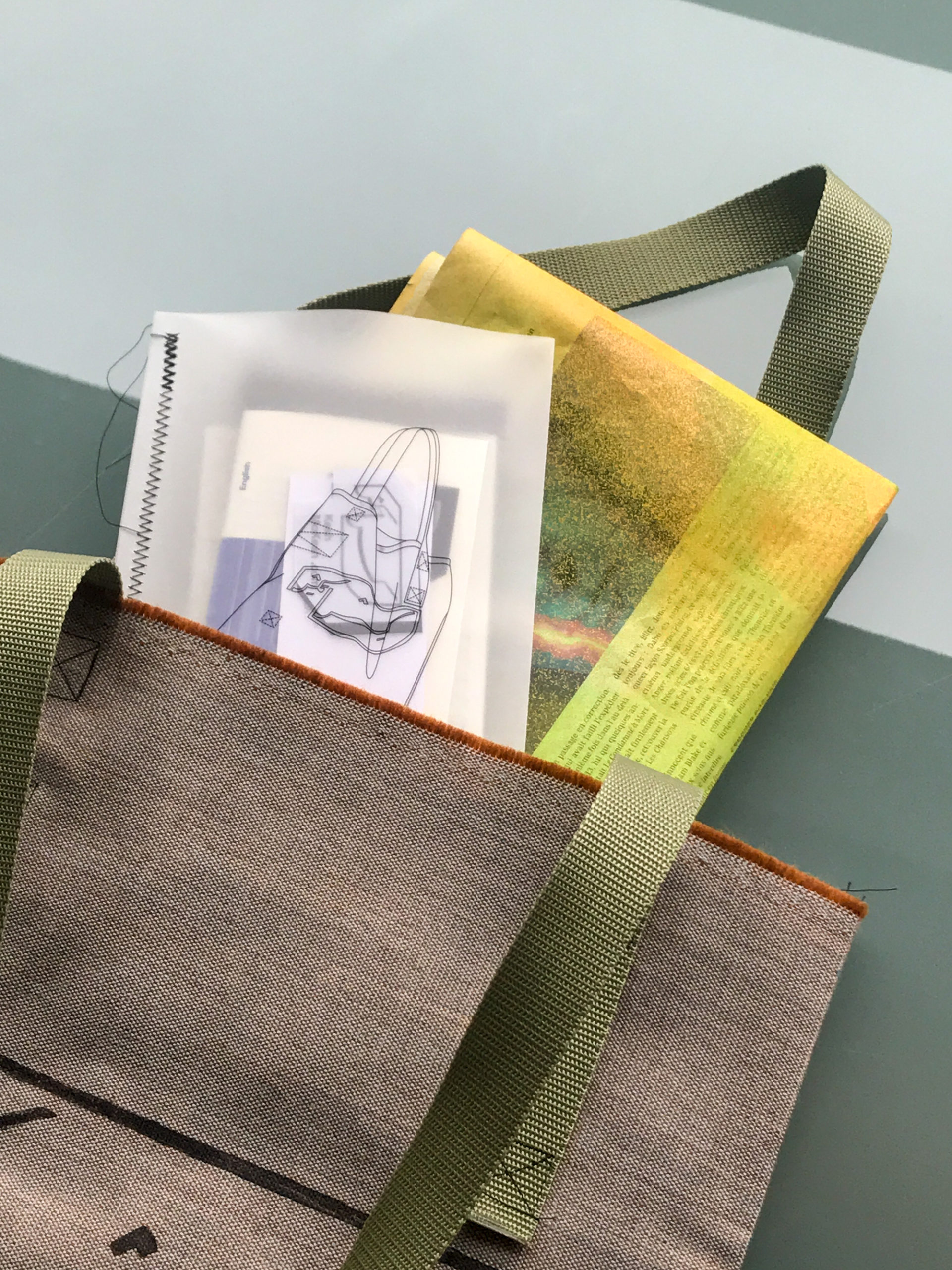
A bag’s functionality is to contain other objects and it is not functional when empty. What you have in your hands is a thought-bag. We fill our bags with stories, thoughts, opinions and imaginations. Making these bags is a way to continue to talk, debate, think and Imagine about diverse subjects. To keep our mind engaged while our hands are busy. This product is made to keep this intellectual process sustainable and invite you to participate in collective thinking. Each bag comes with its own surprises inside. Including stories and artworks evoking discriminations, racism, sexism and social injustices.
We also thought about the sustainability of the material object. We decided to upcycle instead of buying. Fabrics used for making major parts of the bags are collected from big furniture factories where the unused fabric leftovers are thrown away. Each time the collected fabrics vary. We think and design the bags in function of what material we have in disposition. This is why each bag is unique and numbered. We believe that each piece of fabric is unique, precious and has its own story. Being guided by the available material stimulates our creativity to make the best out of them.
The stories and discussions we had while making these bags are provided in a printed designed format inside the bag. But more importantly these stories are quilted into the bags. While making thought-bags, these stories have made us think, listen and talk. They have been witnessing our happiness and sadness. These emotional and intellectual states have for sure guided our hands in a spontaneous way. To make a connection between inside and outside of the bag, the swing lines attaching parts in the inside are visible on the outside.

We try to keep the labor modalities responsible, for this we make all parts of the bags with our own hands. Not a single task is outsourced and we are not willing to mass produce our bags. To be able to make this happen, we had to learn the techniques by reading, searching and trying. We learned how to overcome the challenges in sewing. We learned how to hand print on different fabrics. We learned how to write stories. And most importantly we learned how to be a team and overcome the obstacles. Our talks while making these bags made us learn not just by listening to each other, but also because we felt the need to read and educate ourselves on the way. We are also so eager to share what Kesh-Makesh project taught us.
As part of diasporas, we have the chance to witness the world from different perspectives. We also confront at least 3 languages in our everyday life. Although we are not native speakers of all of them and errors might occur, we think that providing our communication and stories in all 3 languages can produce transnational bounds and conversations. It can also consolidate relations between the home country and the diaspora.
Post Covid-19 world
Just before releasing our website the Covid-19 pandemic happened which made a pause in our work. But it also made us more determined in our path. We realized how important such projects are. Not only because green projects can reduce our impacts on earth, but also it made us feel the necessity of our social relationships in keeping our communities strong against the oppressions.


